Dell Inspiron 13 7000 Series Battery Replacement Guide
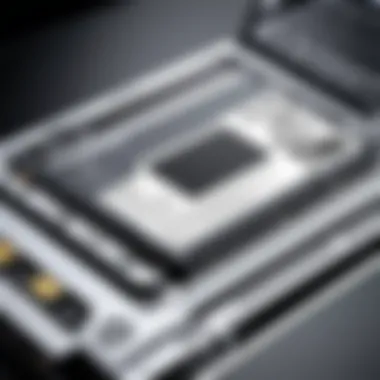
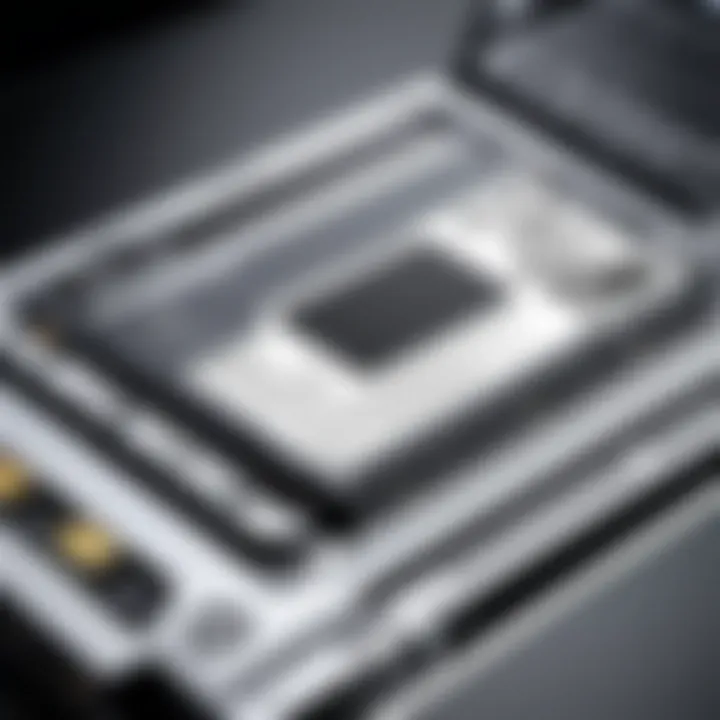
Intro
In today’s fast-paced technological landscape, ensuring that your devices operate smoothly is crucial, especially for those of us who rely on our laptops daily. Among these devices, the Dell Inspiron 13 7000 Series stands out due to its combination of portability and performance. However, like any electronic device, its efficiency can diminish over time, particularly when it comes to battery life. This guide is designed to help both IT professionals and tech enthusiasts navigate the ins and outs of battery replacement for this specific model. We will investigate the workings of the laptop's hardware and software, followed by practical advice on maintaining and replacing the battery.
Overview of Hardware/Software
Prelude to the product and its key features
The Dell Inspiron 13 7000 Series is sleek and compact, making it an excellent choice for users who are often on the go. It boasts a slim design, vibrant display, and an intuitive touchpad. The integration of Windows operating system enhances overall user experience, allowing for seamless multitasking. Key features include:
- Touchscreen Display: High-resolution screen which supports stylus input for added convenience.
- Intel Processors: Equipped with the latest Intel chips for efficient performance.
- 1TB Storage Options: Ample space for your documents, pictures, and software.
Specifications and technical details
The specifications of this model provide a clearer picture of its capabilities. Users should note that the battery is integral to its performance. Here’s a breakdown of important technical details:
- Screen Size: 13.3 inches (Full HD)
- Weight: Approximately 3.5 lbs
- Battery Life: Up to 10 hours on standard usage
- Memory Options: Up to 16GB RAM
Pricing and availability
In terms of pricing, the Dell Inspiron 13 7000 Series generally ranges from $800 to $1,250 depending on the specifications. Given its features, users may find it a suitable investment for both work and leisure. It is widely available through Dell’s official site, as well as major retail outlets.
Comparison to previous versions/models
When comparing this series to its predecessors, notable improvements are clear. The 7000 series enhances display quality, incorporates better battery management features, and provides a more robust build. In contrast, earlier models sometimes suffered from weight issues and lesser performance under stressful conditions.
Pros and Cons
Highlighting the strengths and weaknesses of the product
Pros:
- Excellent battery life suitable for extended use.
- Compact and lightweight design for easy portability.
- High-quality construction materials for durability.
Cons:
- Some users report challenges with heat management during heavy tasks.
- Higher price point compared to similar models in the market.
User feedback and reviews
Overall user reviews reflect a generally positive experience. While some have heralded its performance during business ventures, others have mentioned the need for better heat dissipation technologies. As with many devices, opinions vary based on user needs and priorities.
Performance and User Experience
Performance testing results
Performance testing of the Dell Inspiron 13 7000 indicates its ability to handle multitasking without significant slowdown. It's common to see users running multiple applications without facing lag, thanks to the robust hardware and efficient software design.
User interface and ease of use
The user interface is straightforward and intuitive, aiding in quick navigation. The touch-responsive elements work seamlessly, contributing to a positive user experience. Even those less familiar with tech often find it user-friendly.
Real-world usage scenarios
For remote work or studies, the device serves as a reliable partner. Whether participating in virtual meetings or engaging in content creation, the Inspiron adequately meets various user demands.
Efficiency and productivity impact
A solid battery means uninterrupted productivity. Users often appreciate how long they can work before needing a recharge, which greatly impacts overall efficiency especially in scenarios where power sources are limited.
Recommendations and Closure
Overall verdict and recommendations
In summary, the Dell Inspiron 13 7000 Series represents a strong choice for anyone seeking a laptop that blends performance with portability. Its battery replacement process might seem daunting, but this guide intends to simplify it and arm you with the necessary knowledge.
Target audience suitability
This laptop seems ideal for IT professionals, students, and remote workers. Those who value battery longevity and efficient performance will particularly appreciate this device.
Final thoughts and future prospects
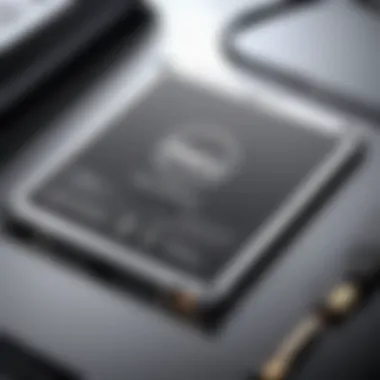
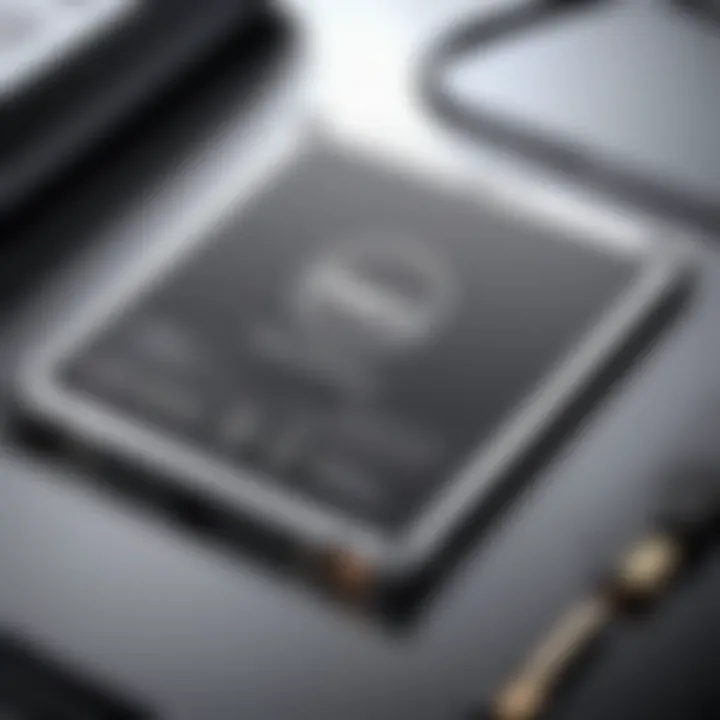
As technology continues to evolve, so too will the features of laptops. Keeping up with battery maintenance can extend the life of your Dell Inspiron, making it a durable asset moving forward. With a little know-how and proactive care, users can continue to enjoy efficient operation for years to come.
Prologue to Battery Issues
Batteries are the lifeblood of any portable device, and the Dell Inspiron 13 7000 Series is no exception. Understanding battery issues is not just a matter of replacing a dead cell; it’s about prolonging the life of your laptop and maximizing your productivity. In this fast-paced world where power is essential, knowing how to maintain and replace your laptop battery can save not only time but also money.
Why is battery health crucial? The obvious answer lies in usability. If your device dies unexpectedly during a presentation or a meaningful video call, it can lead to loss of data, frustration, and even missed opportunities. Also, as the battery ages, it becomes less capable of holding a charge, leading to more frequent top-ups and inconvenience. Thus, a keen understanding of battery lifespan and issues can aid in making informed decisions about replacements.
Additionally, approaching battery issues from a proactive standpoint allows users to spot problems before they escalate. Keeping an eye on battery health can be the difference between a smooth experience and the chaos of dealing with sudden failures. This article takes an all-encompassing look at the battery replacement process, aiming to empower users with knowledge and confidence.
Understanding Battery Lifespan
The lifespan of a battery isn’t simply determined by time elapsed since purchase; rather, it’s influenced by usage habits. Lithium-ion batteries, commonly used in modern laptops, typically last anywhere between 2 to 4 years or approximately 300 to 500 charge cycles. Each time you power up your device from a low state or discharge it to zero before recharging, that’s considered a cycle.
To maximize the lifespan, it is advisable to keep your battery level between 20% and 80%. Prolonging charging periods, like letting the laptop sit plugged in for hours after it reaches 100%, can contribute to increased wear. Moreover, exposing the battery to extreme temperatures can shorten its life significantly. Consistent, moderate use is the key to ensuring your battery serves you reliably for as long as possible.
Signs of a Failing Battery
Sometimes, batteries don’t give clear warnings before they bite the dust. However, paying attention to symptoms can provide early alerts. The first and sometimes most noticeable sign is decreased battery life. If you find yourself tethered to the charger more than usual, that’s a clue. Other indicators can be a battery swelling or even an overheated laptop. A sudden shutdown, even when you know the charge was adequate, should raise flags too.
Here are some signs to watch for:
- Rapid discharge: If your laptop can't hold a charge, consider testing the battery.
- Physical changes: Look out for warping or bulging of the battery casing.
- Charging status: If your battery shows "0%" immediately after charging it for several hours, that's a major red flag.
Important: Regularly check battery health using software tools to monitor its status. Staying on top of these signs can ensure that when the time comes for a replacement, you are well-prepared to tackle the process.
Overview of the Dell Inspiron Series
When it comes to laptops that balance performance, portability, and style, the Dell Inspiron 13 7000 Series stands out. This range of laptops has made a name for itself among professionals and tech enthusiasts alike. Understanding the intricacies of these models is essential, especially when considering aspects like battery management, which can heavily influence your overall experience with the device.
Dell's Inspiron 13 7000 Series isn't just another laptop line; it offers sophisticated design paired with functionality. This makes it ideal for users who require a robust machine that can handle everything from office tasks to creative work. An overview of the features and user profiles associated with these laptops is crucial in assessing their suitability and addressing potential battery issues.
Model Specifications
The Dell Inspiron 13 7000 Series is known for its impressive specs, which enhance both productivity and entertainment. Typically, these laptops boast:
- Processor Options: Ranging from Intel Core i5 to i7, providing ample power for multitasking.
- Display Quality: Full HD and even 4K touchscreen options available, enhancing visual experience for both professionals and casual users.
- Memory: Options usually start at 8GB, making multitasking smooth and efficient.
- Storage: Solid-state drives (SSD) for quick boot times and file access, with options of up to 1TB.
- Graphics: Integrated Intel UHD Graphics or discrete options for those engaged in graphic-intensive tasks.
These specifications not only ensure that the hardware can handle demanding applications but also that users can enjoy their content without hassle.
Target User Demographics
The Dell Inspiron 13 7000 Series caters to a diverse user base. The essence of understanding who these users are helps in tailoring solutions, especially regarding battery needs.
Here’s a look at the core groups:
- Students: They appreciate the blend of portability, battery life, and performance, typically utilizing it for coursework and light gaming.
- Professionals: Often working in creative industries, they rely on the powerful specs for design software and presentations.
- Tech Enthusiasts: This group is keen on performance benchmarks and features, making informed choices based on reviews and specifications.
Addressing the needs of these varied user demographics emphasizes the importance of discussing battery replacement in detail. A better understanding of the model specifications and user requirements lays a foundation for effectively managing battery longevity and performance.
Battery Replacement Process
Being familiar with the battery replacement process for the Dell Inspiron 13 7000 Series is not just a matter of convenience; it can genuinely save time and enhance the performance longevity of your laptop. Upon realizing that your device isn’t holding charge like it used to, the next logical step is considering a replacement. A properly executed battery swap can breathe new life into your system, allowing it to run longer without the need for a constant power source. This guide addresses key elements of this process, such as preparation, required tools, and detailed steps to help streamline your experience.
Preparation and Tools Required
Before jumping into the nitty-gritty of battery replacement, having the right tools at your disposal is crucial. You wouldn't want to be halfway through a project only to find that you're missing a screwdriver or a prying tool. If you gather everything beforehand, you can make the entire process smoother. Here’s a handy checklist of what you need:
- Screwdrivers: Both Phillips and flathead are often indispensable.
- Plastic Pry Tools: These are great for opening the laptop without causing damage.
- Tweezers: Helpful for pulling out small screws or connectors.
- Anti-static Wrist Strap: Though not mandatory, this can help prevent static discharge that could harm electrical components.
Having all these items ready will save you from future headaches. Plus, always make sure that your workspace is clean and organized, reducing the chance of losing screws in the cracks of your desk.
Powering Down the Device
It might seem obvious, but powering down the laptop is a step that should never be overlooked. Not only does this ensure your safety while handling electronic components, it also prevents unexpected data loss. Here’s how you should go about it:
- Save Your Work: Close all applications and save files to avoid losing any important data.
- Shut Down Properly: Navigate to the start menu and choose the option to shut down. Don't just close the lid – this can lead to data corruption.
- Disconnect Power Cords: Ensure to unplug any power cables and other peripherals connected to the device. This can alleviate the risk of shocks or shorts when working on your laptop.
Taking these steps ensures that you’re not working with a live system, giving you peace of mind as you proceed.
Accessing the Battery Compartment


Once you’ve powered down, accessing the battery compartment becomes your next objective. For many users, this step might seem daunting, as it often involves removing the back cover. Follow these general steps:
- Flip the Laptop Over: Position your laptop with its screen facing down on a soft surface to avoid scratches.
- Remove Screws: Use the appropriate screwdriver to remove the screws from the back panel. Keep track of the screws as you go along because they come in different sizes, and reorganizing them is a headache.
- Pry Open the Cover: With the screws out, use your plastic pry tool around the edges to gently lever off the back panel. Be careful to not exert too much force; it might lead to breaking the plastic clips holding it together.
After completing this, the internal components, including the battery, should be visible, allowing you to continue with the process.
Removing the Old Battery
Now we come to the business end – it’s time to bid adieu to the old battery. Removing the old battery involves:
- Identifying Connectors: The battery will have a connector attached to the motherboard. Locate it before proceeding further.
- Disconnecting the Battery: Gently detach the connector from the motherboard. You may have to lift a latch or pull a tab, depending on the design. Patience is key; don’t rush this part.
- Unscrewing the Battery: Look for securing screws that fasten the battery in place. Using your screwdriver, carefully remove these screws.
- Lift the Battery Out: Once everything is disconnected and unscrewed, gently lift the battery out.
Take a moment to inspect the old battery. Any bulging or leakage indicates that its time was up.
Installing the New Battery
With the old battery out, you’re ready to put in the new one. Follow these tips:
- Align the New Battery: Place the new battery into the compartment, ensuring it aligns perfectly with the mounting slots and connectors.
- Secure with Screws: Replace the screws to hold the battery in position. Remember, they should go back in the same holes from which you removed the old battery screws.
- Connect the New Battery: Attach the connector back to the motherboard, ensuring a snug fit. This step is pivotal for allowing power to flow to your laptop.
Finalizing the Replacement
Before putting everything back together, take a moment to double-check your work. Revisit these steps:
- Inspect Connections: Make sure all connectors are secure.
- Replace the Back Panel: Align it properly before pressing down around the edges to snap it back into place.
- Screw Everything Back: Reinsert all the screws you removed earlier and tighten them adequately but watch out for overtightening, which could damage the casing.
Finally, flip the laptop back over, plug it into a power source, and power it up. If everything is in order, your device should boot up without any fuss.
Post-Replacement Considerations
Once the battery replacement is complete, there's a few important steps and considerations to keep in mind. Properly addressing these aspects can influence the overall performance and lifespan of your new battery, ensuring your Dell Inspiron 13 7000 Series continues to function smoothly.
Calibrating the New Battery
Calibrating your new battery is a critical step that shouldn’t be overlooked. When you first replace the battery, it’s crucial to make sure that the power management system in your laptop recognizes the battery’s full capacity. This helps in providing accurate readings of the battery percentage and ensures efficient charging. To calibrate your battery, follow these steps:
- Charge the Battery: Plug the laptop into a power source and charge the battery to 100%. Keep it connected for an additional couple of hours to make sure it's fully charged.
- Power Cycle: Once charged, unplug the laptop and allow it to run on battery power. Use it normally until the battery drains completely and the device shuts off.
- Leave for a While: After the laptop turns off, let it sit for a few hours. This allows the battery to rest and helps recalibrate the battery management system.
- Recharge to 100% Again: Finally, plug in the laptop and charge it back to 100% without interruption.
By performing these calibration steps, you'll help your device accurately report battery levels and maximize battery performance.
Best Practices for Battery Maintenance
Taking care of your battery post-replacement isn’t just about managing charge cycles. It’s a holistic approach that can prolong the life of your battery and keep your device performing optimally. Here are some best practices to consider:
- Avoid Extreme Environments: Lithium-ion batteries are sensitive to heat and cold. Keeping your laptop in extreme conditions can degrade battery life. Ideally, store it in a place that maintains a moderate temperature.
- Keep It Clean: Dust and debris can accumulate in the battery compartment and ports. Regularly check and clean them to prevent potential issues.
- Charge Wisely: It's best to keep your battery between 20% and 80%. Fully draining or constantly charging it to 100% can wear it out faster. Think of it as finding that happy medium; your battery will thank you.
- Update Software Regularly: Software updates often include optimizations for battery performance. Keep your laptop’s operating system and applications updated to benefit from these improvements.
- Use Battery Saver Modes: When you know you won't have access to a charger for a while, consider activating battery saver modes. This reduces performance but can extend battery life during low power situations.
By following these practises, you not only enhance the performance of your new battery but also contribute to the longevity of your device as a whole.
"An ounce of prevention is worth a pound of cure." - Benjamin Franklin
By keeping these considerations in mind after replacing your battery, you'll ensure that your Dell Inspiron 13 7000 Series operates at its best for as long as possible.
Common Troubleshooting Issues
When working with the Dell Inspiron 13 7000 Series, encountering issues during or after a battery replacement is not uncommon. This section addresses common troubleshooting issues that can arise, ensuring that readers are well-equipped to handle various scenarios that they might face. Understanding these problems is crucial, as it aids in quickly restoring device functionality.
Device Not Powering On
If your Dell Inspiron doesn’t power on after replacing the battery, don’t panic just yet. This issue can stem from a few different sources. First, check that the new battery is properly seated within its compartment. A loose connection can easily prevent the device from turning on. Also, ensure that the power adapter is connected correctly and that it’s functioning as needed.
Another element to consider is a drained capacitor. To reset this, disconnect the power adapter and battery, then hold down the power button for about 15-20 seconds. This can help discharge any residual power in the system. Once that’s done, reconnect everything and see if the device springs back to life.
Fast Battery Drain
Experiencing rapid battery drainage after replacement can be frustrating. It's like filling a bucket with water while the bottom has a hole. One potential culprit could be background applications. Take a moment to check what’s running. If you find resource-heavy programs hogging power, consider closing them.
Furthermore, check your power settings. The Dell Inspiron provides various power management options that can extend battery life. Fine-tuning these settings can help maximize efficiency. Also, ensure that your new battery is calibrated; an uncalibrated battery won’t give you an accurate representation of its charge status.
Battery Not Being Recognized
When your new battery is not recognized by the system, it could leave you scratching your head. A typical first step is to revisit the installation process. Sometimes, it’s just a matter of ensuring that the connections are secure. Use the device's BIOS to check if the battery is detected at all; if it's not listed, it may be a sign of a deeper issue.
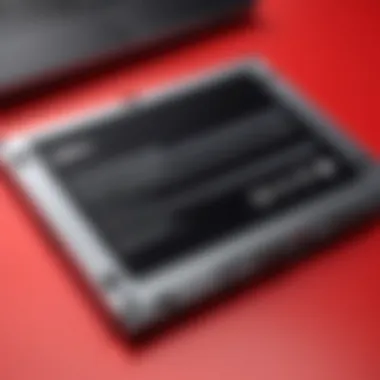
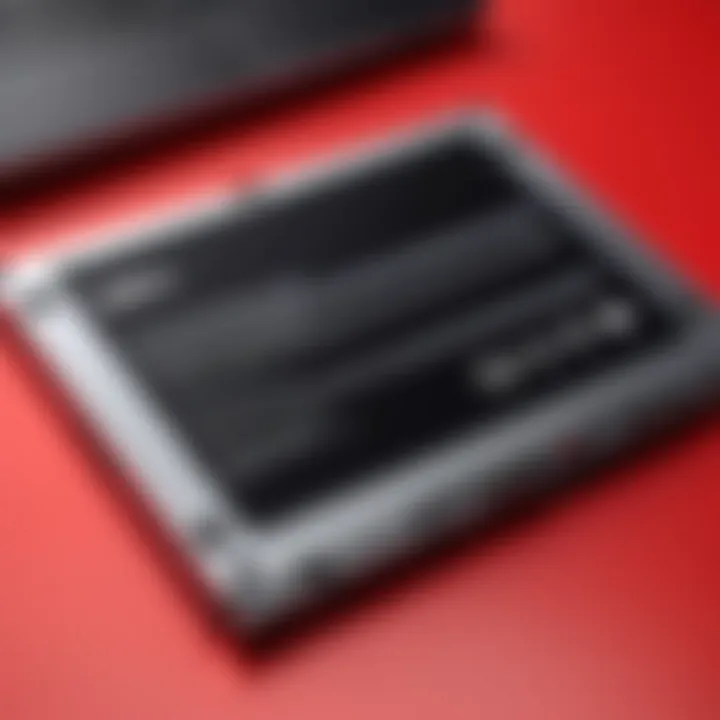
A useful troubleshooting step includes removing the battery and then performing a power cycle. Start by disconnecting the power and removing the battery, then hold down the power button for about 30 seconds. Afterward, reconnect the battery and power source. If the system still doesn’t recognize the battery, it may indicate a compatibility issue or a defective battery.
In troubleshooting battery issues, patience is as essential as technical know-how. Always take a systematic approach to identify the root cause before jumping to conclusions.
Maintaining an awareness of these common troubleshooting issues can significantly enhance the user experience with the Dell Inspiron 13 7000 Series. By knowing what to look for and how to address each potential problem, you’re better prepared to ensure that your device runs smoothly after a battery replacement.
Purchasing Replacement Batteries
Finding the right replacement battery for your Dell Inspiron 13 7000 Series can feel like wandering through a maze. It's key to get this step right, as the performance and longevity of your laptop largely hinges on the battery you choose. Without a proper battery, even the best specs can be rendered virtually useless. Choosing the right battery not only ensures compatibility but also affects your device's efficiency and safety.
OEM vs. Aftermarket Batteries
When it comes to replacement batteries, you'll come across two main categories: OEM (Original Equipment Manufacturer) batteries and aftermarket batteries. Let's break down the differences and weigh the pros and cons of each.
OEM Batteries
These batteries are produced by the same company that made your laptop. Dell’s own batteries, designed specifically for the Inspiron series, typically guarantee compatibility and reliability.
- Pros:
- Cons:
- Quality Assurance: They meet strict manufacturing standards.
- Compatibility: Direct fit for your laptop model.
- Warranty Protection: Usually come with a manufacturer's warranty.
- Cost: They can be on the pricier side.
- Availability: Sometimes can be trickier to find.
Aftermarket Batteries
Aftermarket batteries are made by third-party companies. These alternatives can lure you in with lower prices.
- Pros:
- Cons:
- Affordability: Generally cheaper than OEM options.
- Variety: Many options can be found in the market.
- Quality Variance: Not all brands maintain the same level of quality.
- Incompatibility Issues: They might not fit perfectly, leading to performance issues.
Recommended Retailers
When it comes to purchasing replacement batteries, know where to shop. You can find suitable options in several places, but choosing a trusted retailer can save you time and money in the long run. Here are some recommended retailers:
- Dell Official Store:
The most straightforward option. You know you're getting OEM batteries directly from the source. - Amazon:
A marketplace bustling with options. Just be cautious about reviews and ratings before making a purchase. - Best Buy:
If you're more comfortable buying in person, this retailer often carries OEM batteries. - Newegg:
A tech-centric site where you can find competitive prices, often on aftermarket choices. - eBay:
If you’re hunting for deals, eBay might have rare finds, but always check seller ratings.
Finding the right retailer can make it easier to locate the battery you need while ensuring a good buying experience. Remember to check their return policy; better to be safe than sorry!
Resources for Further Reading
Finding reliable resources is vital when it comes to battery maintenance and replacement for the Dell Inspiron 13 7000 Series. While this article aims to provide a comprehensive overview, the diversity of available materials enables you to explore further. Engaging with a mix of manufacturer documents and user-generated content can deepen your understanding and equip you better.
Manufacturer Documentation
Getting your hands on manufacturer documentation is like finding gold in a haystack. These documents typically contain detailed specifications, official troubleshooting techniques, and important safety guidelines. Dell offers various manuals specific to each model, providing you with
- Battery specifications: Knowing the exact model requirement for your replacement battery helps you avoid mismatches.
- Safety protocols: It's always safer to follow safety instructions provided by the maker, especially when dealing with electronic components.
- Step-by-step repair guides: Manuals often include visuals, making complex processes clearer. Plus, these documents are a lifesaver for recalls or known issues related to specific versions.
You can usually find these documents on Dell’s official website. They are easy to navigate and often conveniently categorized by model or series.
Online Forums and Support Communities
Online forums and support communities can be a treasure trove of real-world advice from people who've already been through the ringer. While you might stumble across threads filled with opinions and varied experiences, sifting through them can lead you to invaluable insights.
- Real-life experiences: Users often share their triumphs and mishaps, giving you a well-rounded idea of what to expect.
- Tips from the trenches: From tweaks in battery settings to alternative solutions, other users might offer quick fixes to common problems that aren't covered in manuals.
- Community support: If you're feeling stuck, dropping a question in a forum like Reddit or Facebook can attract responses from more seasoned enthusiasts or tech-savvy individuals.
Engaging in these communities nurtures a learning environment. While manufacturer guidance is essential, peer knowledge offers practical wisdom you often won't find in formal documentation.
"The best insights often come from those who’ve rolled with the punches before you."
The End
In the realm of technology, understanding the intricacies of battery management cannot be overstated. A well-functioning battery is the heartbeat of your Dell Inspiron 13 7000 Series, affecting overall performance and usability. This conclusion ties together essential points discussed throughout the article and stresses the importance of maintaining a healthy battery for long-term device reliability.
Summarizing Key Points
To recap, some of the critical takeaways include:
- Battery Lifespan: Regular monitoring of your battery’s health and knowing the signs of wear can save users from unexpected shutdowns.
- Replacement Process: The step-by-step guide provided highlights the meticulous nature of replacing the battery, emphasizing the need for proper tools and safety protocols.
- Post-Replacement Care: Calibrating and maintaining the new battery ensures optimal performance in the long run.
- Troubleshooting: Understanding common issues such as fast battery drain or recognition problems can help in identifying when professional support may be necessary.
- Choosing the Right Battery: An informed decision between OEM and aftermarket options can make a significant difference in performance and safety.
By consolidating these points, users are equipped with the necessary knowledge to tackle battery replacement confidently.
Final Thoughts on Battery Management
As you dive deeper into managing your Dell Inspiron 13 7000 Series’s battery, it’s crucial to adopt a proactive approach. Here are a few considerations:
- Regular Check-Ups: Just like you would with a vehicle, periodic checks on your battery's performance can prolong its life. Keeping an eye on health metrics and cycle counts will alert you to any potential issues before they escalate.
- Avoid Extreme Conditions: Batteries thrive in moderate environments. Avoid exposing your device to extreme temperatures, as this can accelerate degradation.
- Educate Yourself: Engaging with tech communities, such as those found on platforms like reddit.com, can provide further insights and shared experiences related to Dell battery management.
In essence, effective battery management is not solely about replacement but encompasses a holistic approach that prioritizes care and knowledge. By incorporating these strategies, users can not only extend their device's lifespan but also enhance their overall computing experience.



